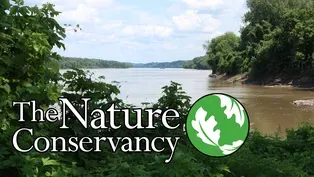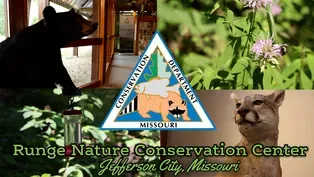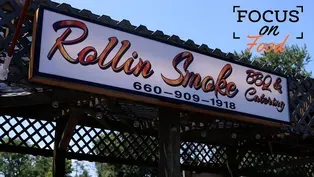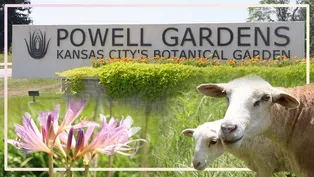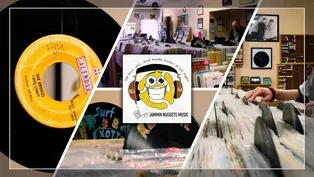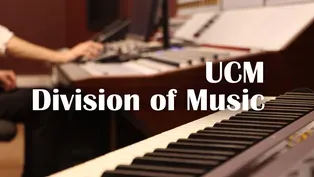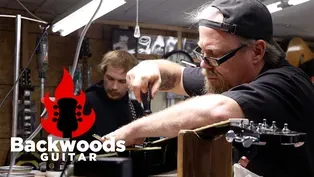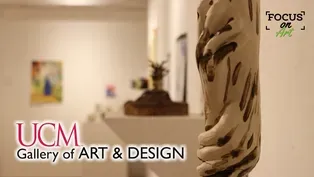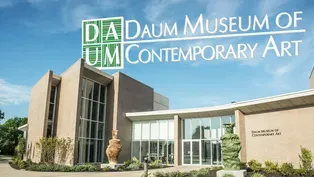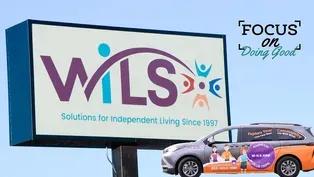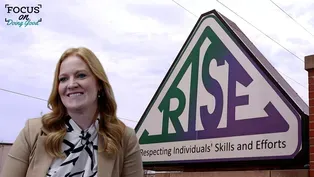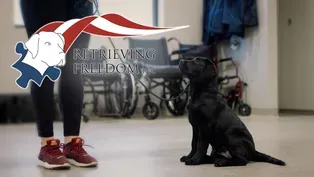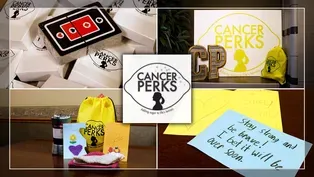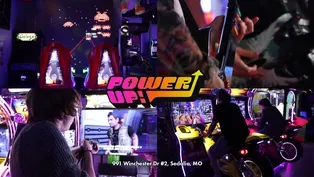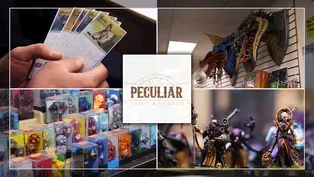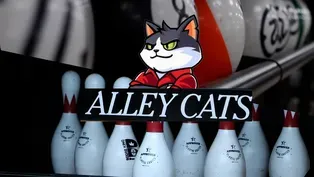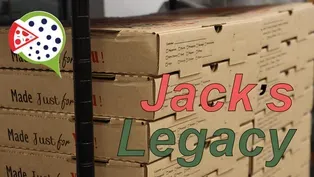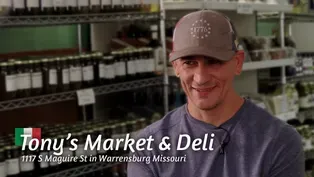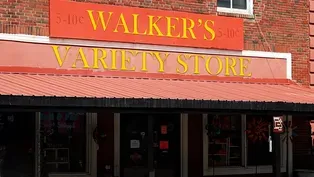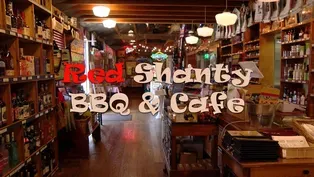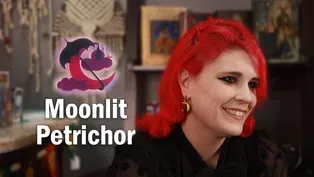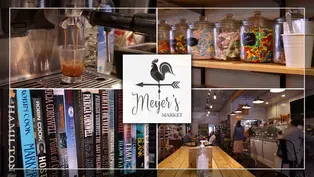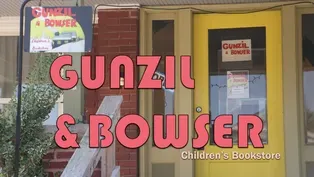Focus On
Focus On: The Nature Conservancy
Clip | 8m 40sVideo has Closed Captions
The Nature Conservancy in Missouri is an environmental non-profit.
The Nature Conservancy in Missouri is an environmental non-profit that works to conserve the lands and waters that make Missouri unique and beautiful. In 2019, flooding in Atchison County brought The Nature Conservancy, along with organizations such as the Missouri Department of Natural Resources, to Missouri River levee L-536.
Focus On is a local public television program presented by KMOS
Focus On
Focus On: The Nature Conservancy
Clip | 8m 40sVideo has Closed Captions
The Nature Conservancy in Missouri is an environmental non-profit that works to conserve the lands and waters that make Missouri unique and beautiful. In 2019, flooding in Atchison County brought The Nature Conservancy, along with organizations such as the Missouri Department of Natural Resources, to Missouri River levee L-536.
How to Watch Focus On
Focus On is available to stream on pbs.org and the free PBS App, available on iPhone, Apple TV, Android TV, Android smartphones, Amazon Fire TV, Amazon Fire Tablet, Roku, Samsung Smart TV, and Vizio.
In 2019, a combination of a few different weather events created really the perfect circumstances for a really extreme flood event.
On the Missouri River in particular.
But throughout the Midwest, a cold winter with a lot of snowpack out west, combined with late winter storms and a storm system that not only dropped a lot of water and precipitation on on the landscape, but that rain pushed and melted a lot of that snow into the streams as well.
And so you had a lot of water coming really fast.
In Atchison County, in the northwest part of Missouri, 56,000 acres wer.. and nearly 300 people had to evacuate their homes.
And so there is massive loss of crop revenue upwards of $25 million, massive loss of land and loss of homes in that area.
My name is Rob hunt.
I'm the director of Resilient Waters for the Nature Conservancy and in Missouri.
So I'm responsible for our, water conservation strategies across the state.
And we have a variety of different projects and programs we're working on under that strategy.
The Nature Conservancy is a science based organization, and we're really motivated in our strategies and goals by this dual crisis of climate change and biodiversity loss.
We as an organization globally, are driven by a set of goals that we call the 2030 goals, and those are focused on land and water protection and conservation, as well as impacts to, people around the world.
The flooding in 2019 provided an opportunity for people that live and work along the river to really think about our river systems.
Many of these communities had experienced flood year over a year, not just in 2019.
The idea of not building the levee back where it was, but moving it away from the river further, really started on the ground level with the landowners and the Levee District and Atchison County.
And so the Levee District and those local residents started reaching out to collaborate with partners, including federal agencies like the Corps of Engineers, state agencies, like Department, Natural Resources and Department of Conservation and organizations like The Nature Conservancy.
My name is Erin Fanning, and I am the program director for the Water Resources Center, which is part of the Missouri Geological Survey, a division within the Missouri Department of Natural Resources.
Natural resources works on protecting and preserving our natural resources in Missouri.
We work on providing recreational and learning opportunities, and just work on anything to try to connect people with all of those natural resources and water Resources.
Center focuses attention on the Missouri and Mississippi rivers.
Focus on water supply issues throughout the state.
So basically anything that's focusing on water quantity issues like flood and drought resiliency, flood resiliency is the ability of the community to come back from a flooding scenario, to either decrease the impact as it's occurring or the ability to recover and restore following a flood event more quickly.
We're partnering with the four states of us Kansas, Iowa and Nebraska, and working with the Corps of Engineers on a system plan looking at the lower 735 miles of river.
Some of the things that they focused on is that the state needs to take a leadership role in flood resiliency efforts, that we need to focus on common sense solutions, that we need to invest in, navigation and flood control infrastructure and those those types of recommendations.
So it provides, in its own way, a roadmap for how we can try to do things differently, to, to bring improvement to these repetitive flood loss communities.
There's very little we can do to stop or prevent flooding.
And so we have to figure out ways to manage strategies include protection.
And so levee itself is usually an an earth mound that runs parallel to the direction of the river.
And it's meant to keep the river mostly concentrated to its channel.
So when the river floods, it floods up and not out onto the landscape.
We've seen over the past decades changes in our precipitation patterns.
And so with the changing climate, we have changing precipitation patterns, which means we're experiencing more and bigger floods.
It's a good time for us to reconsider really what those systems look like.
And if there's other ways to work with rather than against nature to find solutions.
If we have things that we value next to a river, whether that's homes or businesses or, infrastructure or like roads and railways, you can build that levee higher and higher.
But often what that will do is push water on to someone else on the other side, or downstream of you.
So it's likely that at some point you'll experience a flood that still will overtop that infrastructure, and then you're very vulnerable behind that protection.
Another option is to move the infrastructure up out of the floodplain physically.
So like you think of buildings on stilts.
And then another way you can manage is to move your protection systems away from the river a little bit to give the river more room to spread out.
So the benefits to people from a levee setback is that the people behind the new levee have a better level of protection now, because that flood height won't be quite as high.
The other benefits that people gain are the same.
That benefit nature.
So when we were able to do the levee setback project at Atchison County, that created all this new floodplain wetland and bottom line for us, about 1200 acres open back up into the river.
And so all that habitat is very beneficial for wildlife that live in and around the river.
It also provides great opportunities for the people that live in that area for recreation opportunities.
And just have those experiences with wildlife found out in nature closer to their to their front door.
One of the things that as part of the system plan study on the lower Missouri River, they are updating what they call the flow frequency study, where they're looking at how often the river flows, at what levels.
So it will transition into a stage frequency.
Studying and why that's important is so that the solu.. that are identified in the communities along the lower Missouri River are building for current conditions.
The flow frequency study is going to take into account floods that have happened like in 2019.
And look at the different frequencies, the more dynamic weather conditions, that that have been happening recently, so that we can try to build those solutions to withstand current conditions.
We and the other partners on the project really wanted to maximize the benefit from this levee setback at Atchison County.
And so we've been able to create a few resour.. that are available to communities who are interested in similar solutions.
One of those is the levee setback playbook, that kind of walks through how to do a levee setback, give some context and experience that we had going through the process, and that's available on our website.
To anyone who wants to access, one of the better things we can do is reconnect habitat, where it's been fragmented.
And so a levee setback is really a perfect example of those things coming together, where we're able to reconnect that floodplain and give better protection and resiliency to that community of people.
And really helps to ensure good protection down the road as we continue to see changes in our and our climate changes and our precipitation patterns at the local level.
So as far as trying to get a start in, and ecology focus or an environmental focus, one of the things I.. and find out what those opportunities are in your communities to have an opinion and express it.
Focus On: The Nature Conservancy
Video has Closed Captions
The Nature Conservancy in Missouri is an environmental non-profit. (8m 40s)
Focus On: Runge Conservation Nature Center
Video has Closed Captions
Runge Nature Center provides educational opportunities to learn about nature in Missouri! (8m 30s)
Video has Closed Captions
Rolling Smoke BBQ is a restaurant in Warrensburg, MO (6m 38s)
Video has Closed Captions
Powell Gardens is Kansas City's beloved botanical garden located in Kingsville, Missouri. (8m 30s)
Video has Closed Captions
KC Pride Fest is an annual event organized by the Kansas City Pride Community Alliance (11m 49s)
Focus On: Jammin’ Nuggets Music
Video has Closed Captions
Jammin’ Nuggets Music is a locally owned and operated record store in Sedalia, MO. (6m 30s)
Video has Closed Captions
Dr.Kim is a professor and musician involved with the University of Central Missouri. (6m 30s)
Video has Closed Captions
In this Focus on we interview Professor Eric Honour, (6m 48s)
Video has Closed Captions
Backwoods Guitar is a place where anyone that has a passion for music can come and jam out. (6m 37s)
Focus On: University of Central Missouri Gallery Of Art and Design
Video has Closed Captions
The UCM Gallery Of Art and Design shares artwork from the community and UCM students. (7m 5s)
Video has Closed Captions
The Zone Tattoo and Body Piercing is a body modification establishment (6m 30s)
Focus On: Daum Museum of Contemporary Art
Video has Closed Captions
The Daum Museum of Contemporary Art is an art gallery located in Sedalia, MO. (6m 40s)
Video has Closed Captions
Altered Visions is a Tattoo and Piercing studio located at 817 S Maguire St in Warrensburg (6m 12s)
Video has Closed Captions
WILS is a non-profit organization dedicated to assisting those with disabilities (6m 30s)
Video has Closed Captions
RISE Community Services provides for the disabled peoples of Johnson County Missouri (7m 5s)
Video has Closed Captions
Retrieving Freedom a non-profit dedicated to changing the lives of Veterans and children (6m 40s)
Video has Closed Captions
Cancer Perks is a 501C3 non-profit based in Sedalia, MO (6m 29s)
Focus On: Retrograde Charitable Toy And Videogame Museum
Video has Closed Captions
Focus On: Retrograde Charitable Toy And Videogame Museum In Warrensburg, Missouri! (6m 39s)
Video has Closed Captions
Focus On: Power Up Arcade in Sedalia, Missouri! (7m 5s)
Focus On: Peculiar Games & Hobbies
Video has Closed Captions
Peculiar Games & Hobbies is a game store located in Peculiar, Missouri! (6m 29s)
Focus On: Alley Cats Bowling Alley
Video has Closed Captions
Focus On Alley Cats Bowling Alley Warrensburg, Missouri! (6m 30s)
Focus On: Tony's Market & Italian Deli
Video has Closed Captions
Focus On: Tony's Market & Italian Deli (6m 36s)
Focus On: The Red Shanty BBQ & Roadside Cafe
Video has Closed Captions
Focus On: The Red Shanty BBQ & Roadside Cafe (6m 38s)
Focus On: Gunzil and Bowser Children's Bookstore
Video has Closed Captions
Focus On; Gunzil and Bowser Children's Bookstore (6m 45s)
Providing Support for PBS.org
Learn Moreabout PBS online sponsorshipFocus On is a local public television program presented by KMOS
